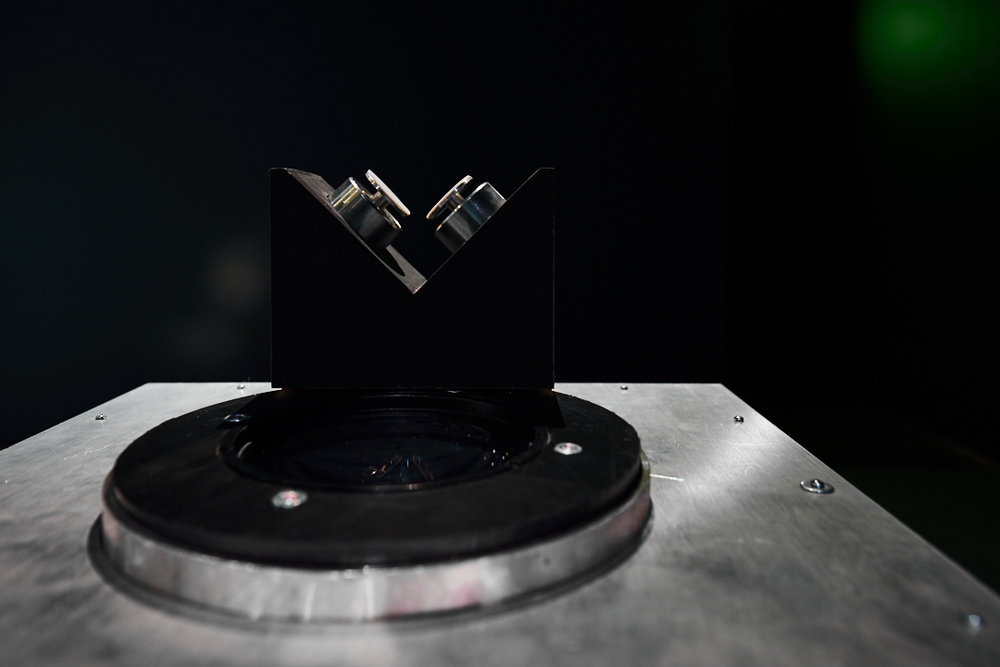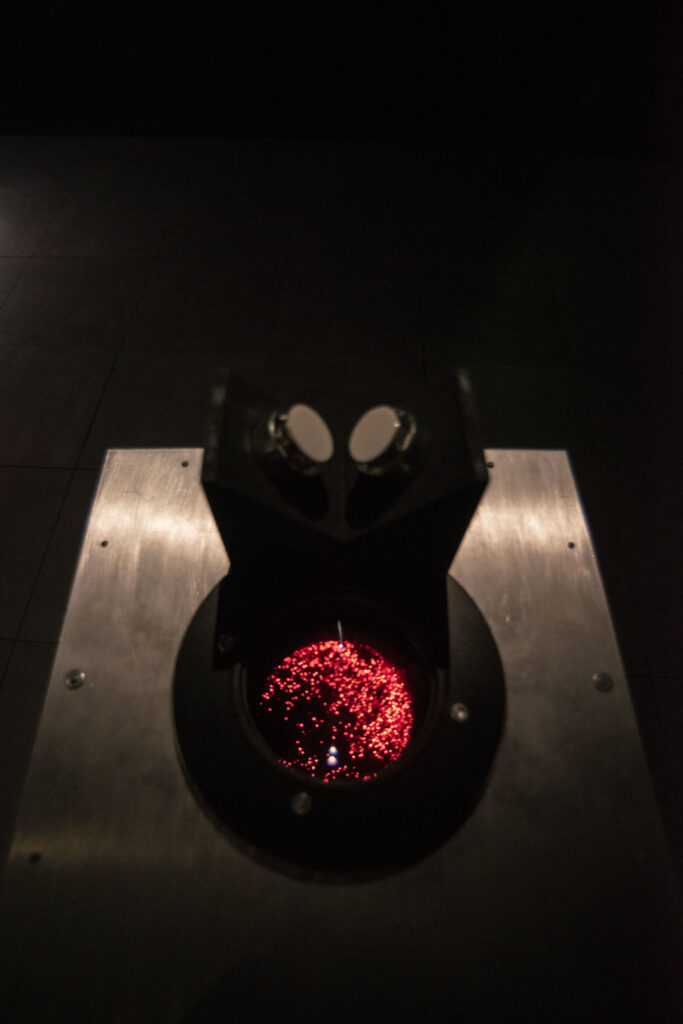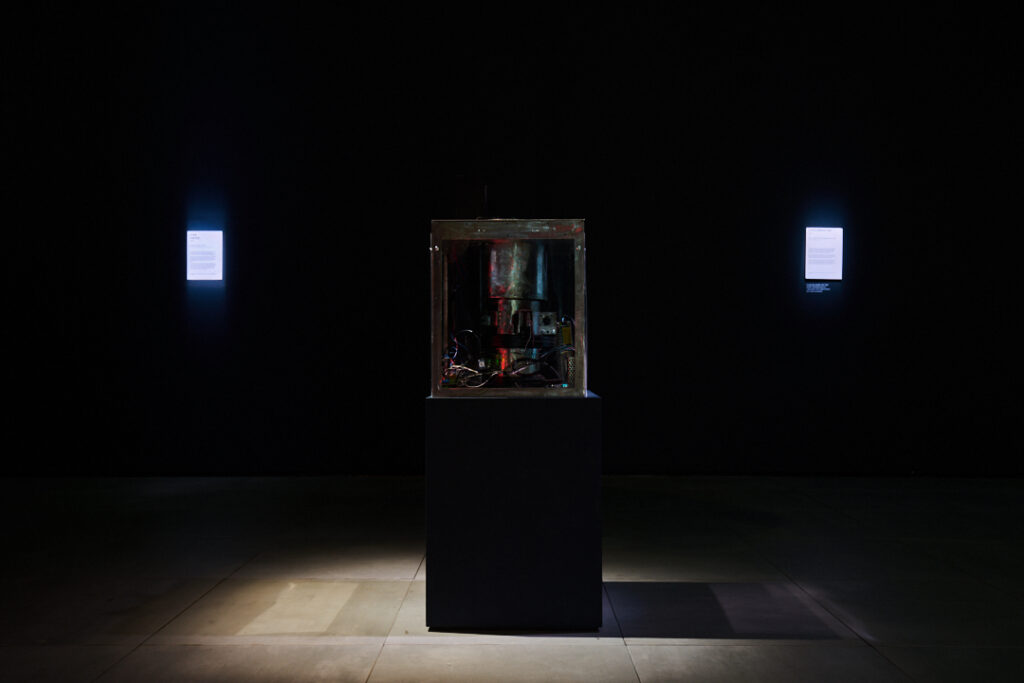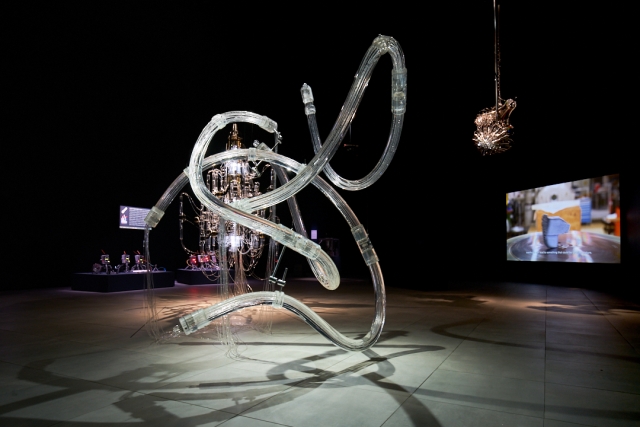- Artist
- Juan Cortés
- Year
- 2018
- Medium
- Custom built mechanism in metal, plastic and acrylic (dimensions variable); Arduino; LED lights
- Artistic Residency
- Collide

Supralunar encourages us to explore Vera Rubin’s findings on the connection between dark matter and the rotational motion of galaxies.
What is the role of dark matter, an invisible form which accounts for approximately 70% of all matter in the universe? In the 1970’s, astronomer Vera Rubin discovered that the objects at the edges of galaxies moved faster than expected, and predicted the existence of unseen dark matter to explain the discrepancy.
In Supralunar, Juan Cortés invites us to experience discoveries made by Rubin on the relationship between dark matter and the rotational movement of galaxies. It proposes a poetic approach to dark matter, visualising this strange and unknown entity that scientists believe supports entire galaxies, stopping them from being torn apart by the extreme speed at which they rotate – but which we cannot see or detect yet.
Placing one’s chin onto the vibrating plate causes the skull’s bones to act as an amplifier for the sound produced by the electromechanical gears inside, while the frequency of the lights inside, visible through a lens, creates a simulation of the morphogenesis of a galaxy through light and sound.
Paradoxically, Supralunar’s construction—reminiscent of an ancient clock—allows us to comprehend through everyday, classical mechanics a phenomenon based on the abstract theories and unseen constituents of modern physical cosmology.









